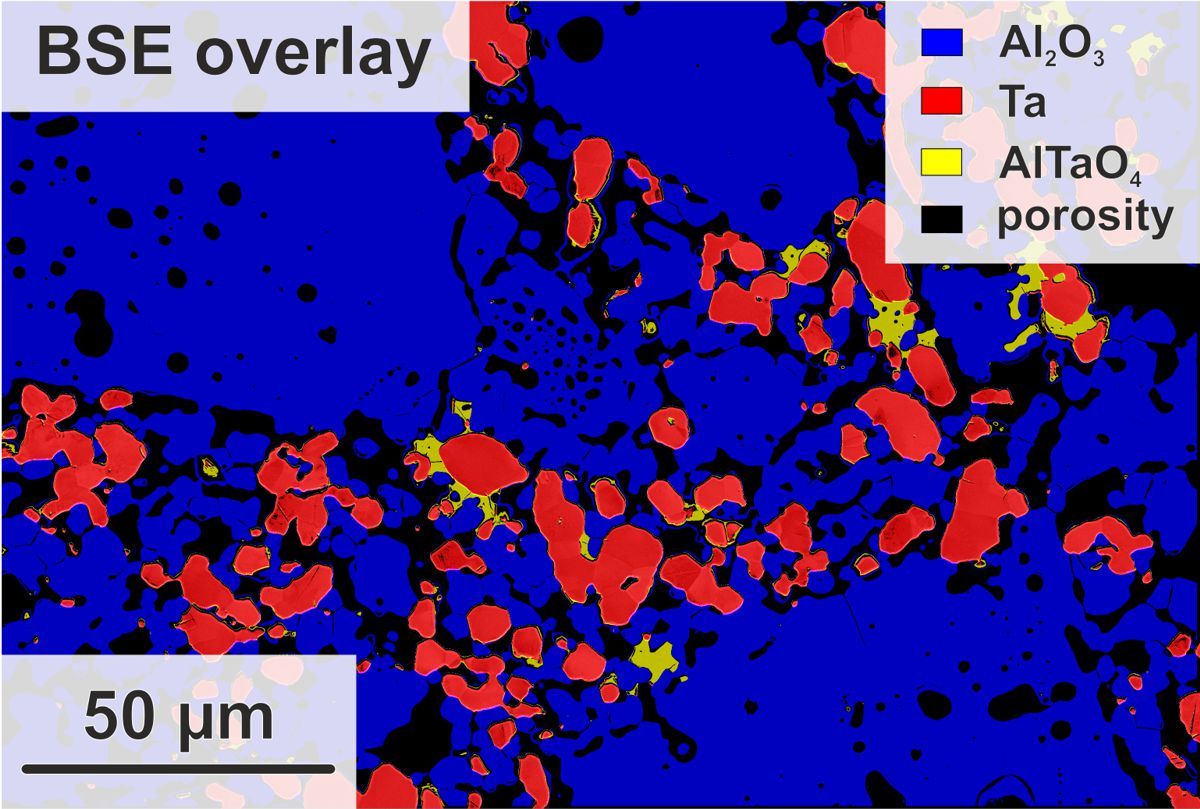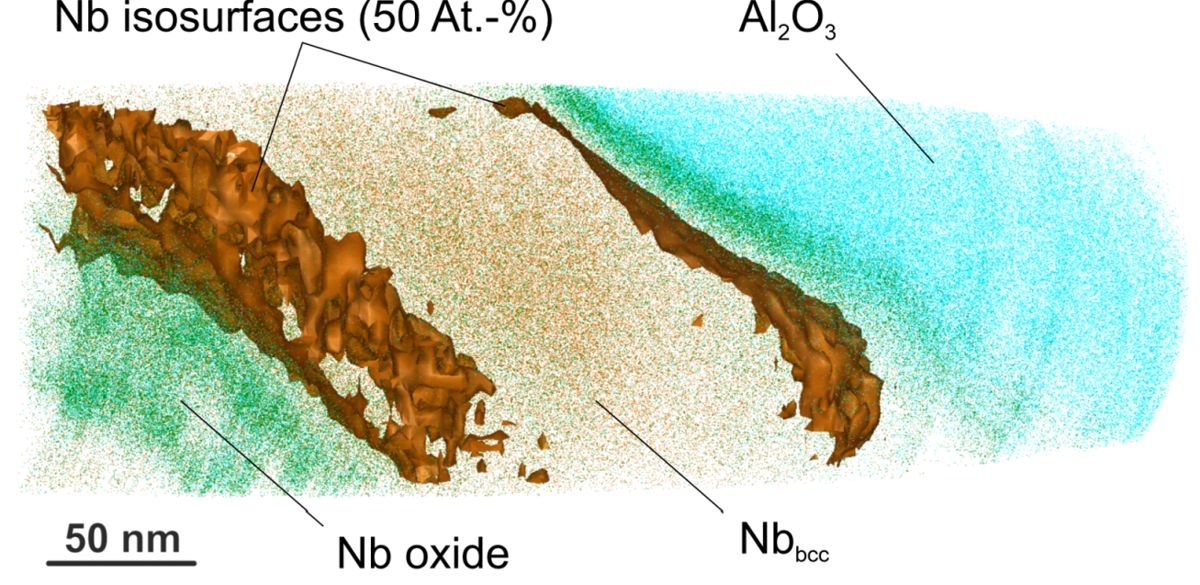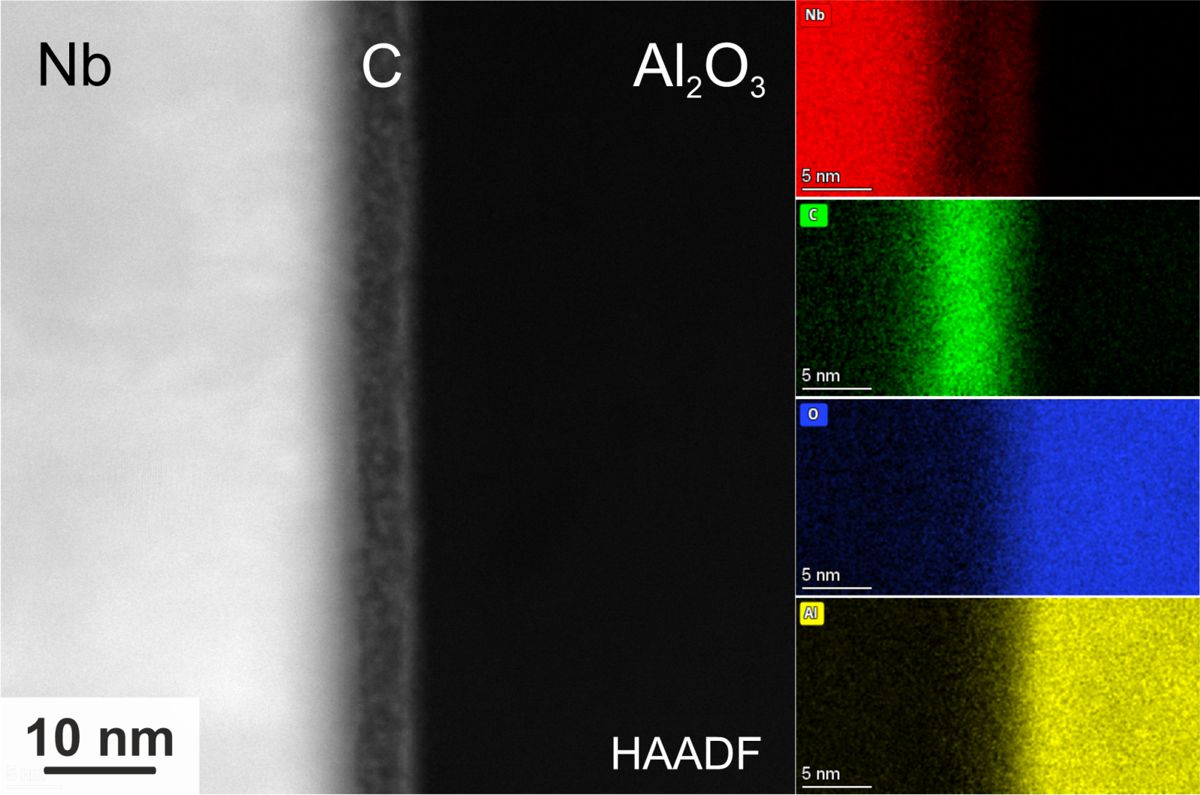Interface analysis and design in powders, green bodies, and components as a function of pressureless and pressure-assisted sintering
Motivation
Components in high-temperature applications such as refractory furnace linings in melt-casting processes or heat shields for gas turbines require materials that are designed for operating temperatures of around 1500°C. Coarse-grained engineering ceramics, including those based on aluminum oxide, meet the requirements concerning chemical and oxidative resistance. The service life of such components is still severely limited due to thermal shock caused by the large thermal gradients. With the addition of a metallic component and, consequently, an increased electrical conductivity, resistive pre-heating of the parts can significantly increase service life. Research into the combination of aluminum oxide and the refractory metals niobium or tantalum within the DFG research group FOR3010 appears to be particularly promising because of their similar thermal expansion behavior. During the sintering of the composites, the formation of further phases through a reaction of the powders with each other and/or with the atmosphere as well as element segregation at grain boundaries can have a decisive effect on the material properties. It is of interest whether these can be specifically influenced by adjusting the synthesis conditions such as temperature, pressure, and sintering additives.
Objectives
- Multiscale investigation of the microstructure of pressureless and pressure-assisted sintered castables to determine the phases and segregations present
- Re-creation and targeted investigation of selected reactions on heat-treated magnetron-sputtered layered composites
- Understanding of the reactions taking place and how to influence them by adjusting the processing parameters
Investigations
- X-ray diffraction and scanning electron microscopic investigations for structure determination and microstructure analysis
- Atom probe tomography and transmission electron microscopy for nanoscale structure analysis
- Determination of layer adhesion energies using hydrogen loading
Funding
Research Group 3010 "Refrabund" by Deutschen Forschungsgemeinschaft
The project is performed by the APT group.



